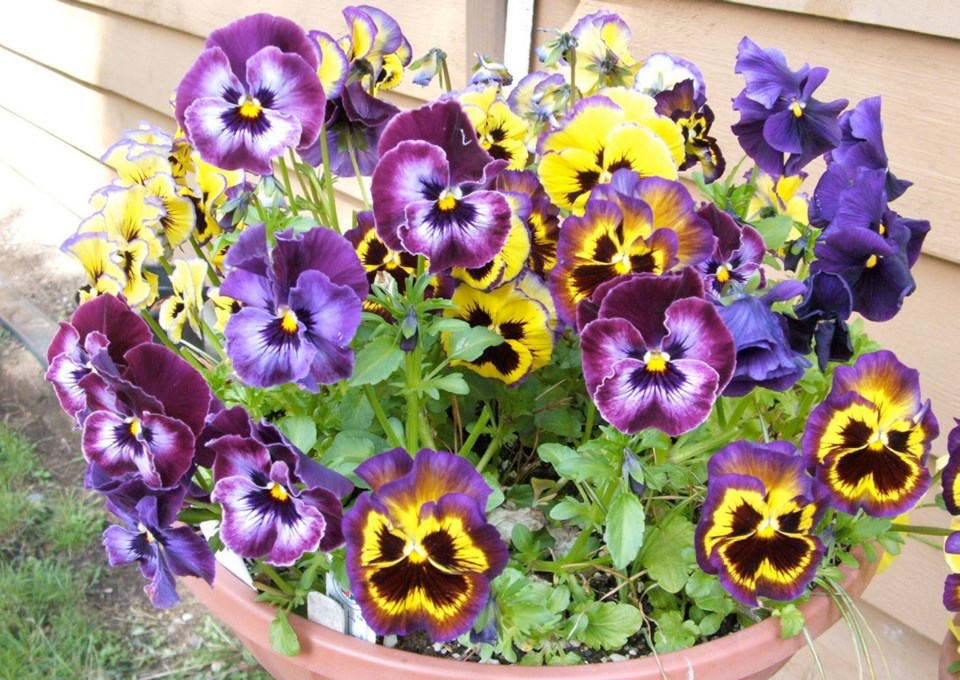Dear Helen: As an extremely busy worker/gardener, I am seeking a shortcut method for processing pumpkin to make purée for using in pies and other things. The usual peeling, cubing and steaming takes a fair amount of time. Is there a quicker way?
L.F.
There is. I see in my 14-year old copy of The Thanksgiving Table this method: Cut a pumpkin in half. Scoop out the seeds and fibres and roast the halves cut side down in a 350 F oven until the flesh is tender, around 45 minutes. Remove the roasted flesh and purée it in a blender of food processor.
Personally, I prefer the taste of pumpkin steam-cooked, but almost all the busy gardener/cooks I know have turned to the speedier roasting method for cooking pumpkin.
Dear Helen: I have moved to Vancouver Island from Smithers, and am excited about gardening year round and being able to have plantings in containers over the winter. I’d love some plant recommendations and also a solution to a problem with discolouration and some white mould on the leaves of my pansies. The soil surface has some spots of mould too.
J.L.
As long as the weather doesn’t turn freezing cold, and you can still find plants in your local garden centres, look for dwarf conifers and evergreen shrubs, heathers, small ornamental grasses, evergreen ferns, and pansies. Let an employee know that you are looking for container plants.
Mildews and moulds on plants and the soil indicate a soil that is too heavy and compacted, and wet. Light levels can be a factor too. Winter container gardens are best located on a south-facing deck, balcony or patio.
The soil blend for winter containers needs to be very porous, to allow any excess moisture to drain quickly through the mix and out of the container. The containers need to have drainage holes.
For staying power in a container mix, I add roughly one part bagged, sterilized soil to two parts of an all-purpose commercial blend such as Pro Mix BX. The BX stands for the producer’s basic mix. A little perlite added in creates air pockets that further facilitate speedy drainage and allow air into the mix for enhanced root health.
In periods of heavy rain, move winter containers against the house or apartment wall, under a roof overhang. Meanwhile, pinch off diseased pansy leaves and stir the soil lightly with a nail or fork to introduce air.
Dear Helen: As the freezer filled with garden produce in the summer, I noticed some packages of blueberries left from previous years. They need to be used. As a longtime reader of your column, I’ve seen that the recipes and cooking methods you share are usually quick and easy. Can you suggest a speedy way to transform my blueberries into something good?
S.A.
Here are a few of my favourite and most speedy ways to use blueberries (and most other fruits).
• Crumble. Pour around 4 cups berries into a buttered baking dish and cover with a “crumble” topping that combines 1 cup flour, 1/2 cup sugar, cinnamon, and 1/2 cup butter rubbed into the mixture. Bake at 350 F for 45 minutes. Serve with ice cream or yoghurt.
• Pie. Arrange 4 cups berries mixed with 1/2 cup sugar and 2 Tbsp flour in pie shell. Top with sliced almonds, cinnamon and a little sugar. Bake at 375 F for 45 minutes.
• Sauce. To each cup of berries add 1/2 cup water, 2 Tbsp sugar, and 1/2 cup apple sauce. For a spiced sauce add 1/2 tsp cinnamon and a dash of cloves. Bring to a boil, reduce heat, and stir in 2 tsp corn starch dissolved in 2 Tbsp water. Cook until thickened. Serve warm or cold with ice cream or yoghurt. I make this as a cheesecake or pancake topping, but I also use it as a quickly made jam.
• Syrup. Add 1/3 cup sugar to each cup of berries. Let sit for an hour. Heat, add 1/4 cup vinegar, and simmer until the berries release all their juice. Adjust for sweetness, cool a little and strain through a non-metallic strainer. Use the resulting tangy syrup as a concentrate to mix with water or soda water, or as a topping for ice cream or yoghurt.



